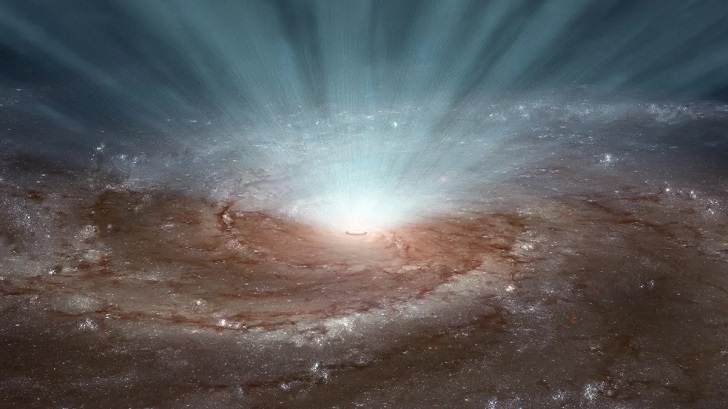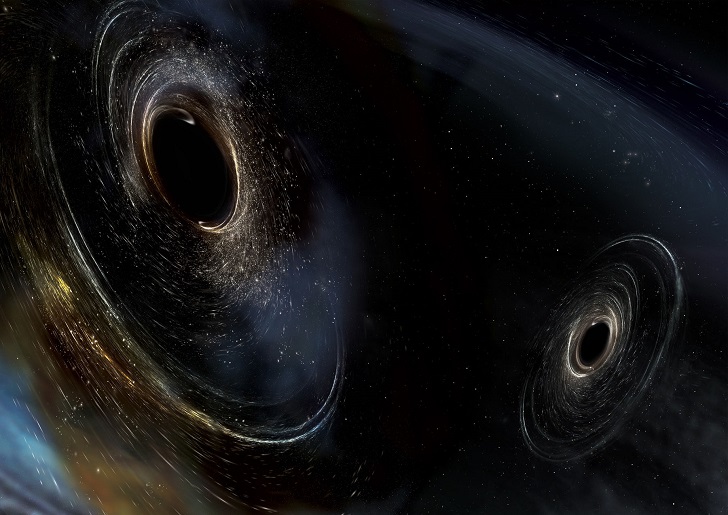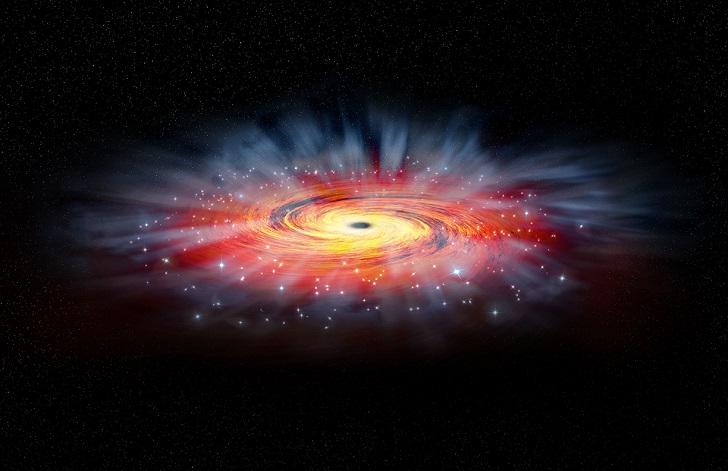A team of astronomers has recently made an incredible discovery that shows the existence of a supermassive black hole at the center of a nearby galaxy. The discovery sheds new light on our understanding of the universe and the role that black holes play in the formation and evolution of galaxies.
What are black holes?

Black holes are extreme astrophysical objects that have captivated the imagination for centuries. As enigmatic as they may seem, we understand how black holes form and behave.
It is theorized that a black hole is created when the matter is compressed into a finite space and time, meaning the mass is so great that it causes the fabric of space-time to be bent inwards, resulting in a singularity. These singularities produce gravity so strong even light can’t escape its pull.
Understanding these mysterious celestial bodies requires more than theoretical speculation; black holes can be mapped via X-ray photography and detected through their gravitational waves. Exploring the many mysteries of our universe, like what lies beyond the event horizon of a black hole, continues to fuel our curiosity about these powerful cosmic entities.
Latest discovery
The supermassive black hole is located in the NGC 6240, approximately 400 million light-years from Earth. The astronomers, led by Dr. Peter Weilbacher of the Leibniz Institute for Astrophysics in Potsdam, Germany, used a powerful instrument called the Multi-Unit Spectroscopic Explorer (MUSE) to study the galaxy and identify the black hole.
According to the team’s findings, the black hole at the center of NGC 6240 is estimated to be around 3 billion times the mass of our sun, making it one of the most massive black holes ever discovered. It’s also unique in that it appears surrounded by two separate disks of gas and dust rotating in opposite directions.
What do the findings mean

This discovery is significant for a few reasons. First and foremost, it helps to confirm some of the theories scientists have developed about the relationship between supermassive black holes and the galaxies in which they reside.
It’s long been thought that the gravitational pull of these massive objects can influence the structure and behavior of their host galaxies, and the presence of a black hole in NGC 6240 supports this idea.
Additionally, the discovery of this supermassive black hole will likely lead to further research and investigation into the general properties and behavior of black holes. While these enigmatic objects have been studied extensively for decades, we still don’t know much about them.
Every discovery brings us closer to a more complete understanding of their nature. Of course, discovering a supermassive black hole in NGC 6240 is also simply a fascinating and awe-inspiring event in its own right.
These objects are some of the most mysterious and intriguing in the universe, and each discovery helps deepen our appreciation for the wonders of the cosmos. It’s worth noting that the discovery of a supermassive black hole in NGC 6240 is also a testament to the power of modern astronomy technology.

The MUSE instrument that the team used to make the discovery is an incredibly powerful tool that provides detailed information about the structure and behavior of distant galaxies. As our technology continues to improve, we’ll likely make many more discoveries like this one.
Bottom line
In conclusion, discovering a supermassive black hole in the galaxy NGC 6240 is an incredible and significant event in astronomy. It adds to our understanding of the universe and the role of black holes in shaping the galaxies surrounding them. And on a more personal level, it’s a reminder of the sheer beauty and wonder in the cosmos and the incredible discoveries that await us as we continue to explore and learn more about the universe.





